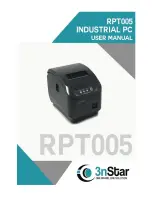
1-30
Laser processing
B337EN01.DOC
5.5 Hazardous
substances
Note
With regard to hazardous substances, we would like to state
explicitly that we can only provide you with some examples of
sources of potential danger. You, as owner of the system, must
check the potential dangers associated with the specific materials
you are machining and undertake any necessary measures.
As a precaution and independently of the necessary exhaust and
filtering equipment and exhaust air ducts, we recommend proper
ventilation and a constant supply of fresh air in the workplace. (See
also Technical Regulations for Dangerous Substances, TRGS).
Dust, aerosols and gases
The following substances are released when laser machining
metallic materials:
•
Dust (particle size over 1
µ
m).
•
Aerosols (particle size less than 1
µ
m). An aerosol is a gas (in
particular air) containing finely suspended solid or liquid
particles.
•
Gases
The emission quantity during the machining of metallic materials
depends on the cutting speed and cutting gas pressure para-
meters. The volume of emission is at a minimum if the parameters
are set optimally.
Apart from the cutting parameters, the type of material also has an
important influence on the volume of emission. For this reason, the
emission quantity during the machining of mild steel (6 mm sheet
thickness: 440 mg/m cutting length) is considerably lower than with
CrNi materials or galvanized sheet steel (6 mm sheet thickness:
2000 mg/m cutting length).
Aerosols and dust particles, of which 97 % have a diameter
<5.7
µ
m, arise when laser cutting metallic materials.
Values of less than 0.1 mg/m
3
were recorded during
measurements of the total particle and aerosol concentration at the
control panel of the machine. These values fall well below the
maximum workplace concentrations (MAK values) allowed in the
Federal Republic of Germany for the total volume of dust
(6 mg/m
3
) and the technical concentration guidelines (TRK values)
for chromates (0.1 mg/m
3
).
Depending on how the owner uses the machine and in particular
depending on the material being processed, dangerous emissions
(especially those classified as carcinogenic) can be produced for
which the values given as examples here do not apply. If such a
danger potential exists, the owner must conduct his/her own
measurements and, if necessary, provide safety precautions for
the personnel.
Emission quantities
Содержание LASERCELL 1005
Страница 1: ...Operator s manual TRUMPF LASERCELL 1005...
Страница 2: ......
Страница 3: ...Operator s manual TRUMPF LASERCELL 1005 Edition 07 2004...
Страница 6: ...0 6 Before You proceed B337EN00 DOC...
Страница 22: ...0 22 Table of Contents B337EN00 DOC...
Страница 23: ...1...
Страница 61: ...1 38 Laser processing B337EN01 DOC...
Страница 62: ...2...
Страница 107: ...3...
Страница 160: ...4...
Страница 238: ...4 78 Operation B337EN4_3 Fig 39422 Fig 39423en Cutting a large contour Cutting a medium contour...
Страница 408: ...4 248 Operation B337EN4_8 Fig 36634 Fig 36630 4 Select Backup to ZIP press 4 5 Press Enter...
Страница 409: ...B337EN4_8 Operation 4 249 Fig 36626 Fig 36627 Backup starts 6 Enter file name press Enter 7 Press Y...
Страница 412: ...4 252 Operation B337EN4_8...
Страница 413: ...5...
Страница 515: ...5 102 Further service programs B337EN05 DOC...
Страница 516: ...6...
Страница 546: ...6 30 Machine maintenance B337EN06 doc 5 Maintenance of pneumatic components and filters 5 1 Instrument panel Fig 39484...
Страница 589: ...7...
Страница 628: ...8...
Страница 635: ...B337EN08 DOC Cross hairs to cut out 8 7 5 Cross hairs to cut out Cross hairs to cut out Fig 6310...
Страница 636: ...8 8 Cross hairs to cut out B337EN08 DOC...
Страница 637: ...9...
Страница 643: ...9 6 Diagram Location of measuring points B337EN09 DOC...
Страница 644: ...10...
















































